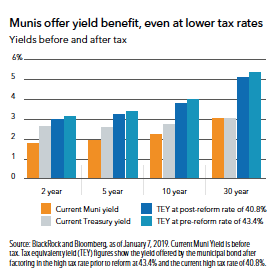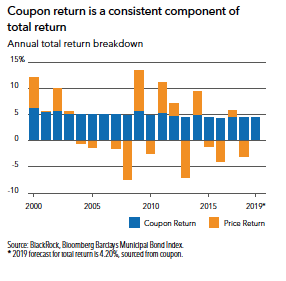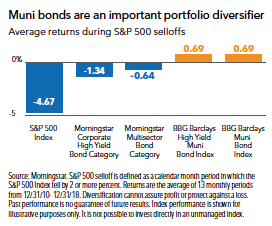In Bennett v. Jefferson County, Alabama, 899 F.3d 1240 (11th Cir. 2018), a panel of the U.S. Court of Appeals for the Eleventh Circuit ruled as a matter of first impression that the doctrine of equitable mootness applies in chapter 9 cases. According to the Eleventh Circuit panel, “[T]he correct result is to join the Sixth Circuit and the Ninth Circuit B.A.P. in allowing equitable mootness to apply in the Chapter 9 context.” The panel held that an appeal filed by county sewer ratepayers of an order confirming a plan of adjustment was equitably moot because the ratepayers failed to seek a stay pending appeal and the plan had been substantially consummated. The panel also concluded that a chapter 9 plan subjecting ratepayers to rate increases over time, “instead of forcing them to bear the financial pain all at once, does not transmogrify it into one that per se violates the ratepayers’ constitutional rights.”
Equitable Mootness
“Mootness” is a doctrine that precludes a reviewing court from reaching the underlying merits of a controversy.
The judge-fashioned remedy of “equitable mootness” bars adjudication of an appeal when a comprehensive change of circumstances has occurred such that it would be inequitable for a reviewing court to address the merits of the appeal. In bankruptcy cases, appellees often invoke equitable mootness as a basis for precluding appellate review of an order confirming a chapter 11 plan. See, e.g., In re LCI Holding Company, Inc., 802 F.3d 547, 554 (3d Cir. 2015) (stating that the doctrine “comes into play in bankruptcy (so far as we know, its only playground) after a plan of reorganization is approved” and ruling that equitable mootness would not cut off the authority to hear an appeal outside the plan context).
The doctrine of equitable mootness is sometimes criticized as an abrogation of federal courts’ “virtually unflagging obligation” to hear appeals within their jurisdiction. In re City of Detroit, Michigan, 838 F.3d 792, 805 (6th Cir. 2016) (dissenting opinion), cert. denied sub nom. Ochadleus v. City of Detroit, Mich., 137 S. Ct. 1584 (2017), and cert. denied sub nom. Quinn v. City of Detroit, Mich., 137 S. Ct. 2270 (2017); In re One2One Commc’ns, LLC, 805 F.3d 428, 433 (3d Cir. 2015) (citing cases); In re Charter Commc’ns, Inc., 691 F.3d 476, 481 (2d Cir. 2012) (same). According to this view, dismissing an appeal on equitable mootness grounds “should be the rare exception.” In re Tribune Media Co., 799 F.3d 272, 288 (3d Cir. 2015).
Standard for Equitable Mootness
Several circuit courts of appeals have formally adopted the doctrine of equitable mootness in considering whether to hear appeals of chapter 11 plan confirmation orders. For example, in In re Manges, 29 F.3d 1034 (5th Cir. 1994), the Fifth Circuit identified three factors in determining whether the doctrine should moot appellate review of a confirmation order: (i) whether a stay has been obtained; (ii) whether the plan has been “substantially consummated”; and (iii) whether the relief requested would affect either the rights of parties not before the court or the success of the plan. Id. at 1039 (citations omitted).
Substantially similar tests for equitable mootness have been adopted by several circuits. See JPMCC 2007-C1 Grasslawn Lodging, LLC v. Transwest Resort Props., Inc. (In re Transwest Resort Props., Inc.), 801 F.3d 1161, 1167–68 (9th Cir. 2015) (applying a four-factor test, including whether the court “can fashion effective and equitable relief without completely knocking the props out from under the plan and thereby creating an uncontrollable situation for the bankruptcy court”); Search Market Direct, Inc. v. Jubber (In re Paige), 584 F.3d 1327, 1339 (10th Cir. 2009) (applying a six-factor test, including: (i) whether the public-policy need for reliance on confirmed bankruptcy plans—and the need for creditors generally to be able to rely on bankruptcy court decisions—would be undermined by reversal of the confirmation order; (ii) the likely impact upon a successful reorganization of the debtor if the appellant’s challenge is successful; and (iii) whether, on the basis of a brief examination of the merits of the appeal, the challenge is legally meritorious or equitably compelling); In re United Producers, Inc., 526 F.3d 942, 947–48 (6th Cir. 2008) (three-factor test); Nordhoff Invs., Inc. v. Zenith Elecs. Corp., 258 F.3d 180, 185 (3d Cir. 2001) (five-factor test, including whether the relief requested would affect the success of the plan, and the public policy of affording finality to bankruptcy judgments); TNB Fin., Inc. v. James F. Parker Interests (In re Grimland, Inc.), 243 F.3d 228, 231 (5th Cir. 2001) (three-factor test); see also In re Philadelphia Newspapers, LLC, 690 F.3d 161, 168–69 (3d Cir. 2012) (holding that the foremost consideration is “whether allowing an appeal to go forward will undermine the plan, and not merely whether the plan has been substantially consummated”); Frito-Lay, Inc. v. LTV Steel Co. (In re Chateaugay Corp.), 10 F.3d 944, 952–53 (2d Cir. 1993) (noting that substantial consummation will not moot an appeal if: (i) the court can still order some effective relief; (ii) such relief will not affect the emergence of the debtor as a revitalized entity; (iii) such relief will not unravel intricate transactions so as to knock the props out from under the plan; (iv) the parties adversely affected by the modification have notice of the appeal and an opportunity to participate in the proceedings; and (v) the appellant diligently pursued a stay pending appeal).
A common element of these tests is that the chapter 11 plan has been substantially consummated. Section 1101(2) of the Bankruptcy Code provides that “substantial consummation” of a chapter 11 plan occurs when substantially all property transfers proposed by the plan have been completed, the reorganized debtor or its successor has assumed control of the debtor’s business and property, and plan distributions have commenced.
Application of Equitable Mootness in Chapter 9 Cases
Prior to Jefferson County, a handful of courts ruled that the doctrine of equitable mootness applies in chapter 9 cases. In City of Detroit, the Sixth Circuit concluded that “equitable mootness applies to Chapter 9 cases just as it applies to Chapter 11.” 838 F.3d at 805. In so ruling, the court reasoned that equitable mootness likely applies “with greater force to the City’s Chapter 9 Plan, which affects thousands of creditors and residents,” than it might in a case under any other chapter with far fewer potentially impacted stakeholders. Id.
Relying on the district court’s (later affirmed) ruling in City of Detroit, a Ninth Circuit bankruptcy appellate panel came to the same conclusion in In re City of Stockton, California, 542 B.R. 261, 274 (B.A.P. 9th Cir. 2015), noting that “equitable mootness has a legitimate role to play in bankruptcy reorganization cases of all types, chapter 11, chapter 13 and chapter 9.” In addition, three other courts have applied it in chapter 9 cases, but with little or no analysis. See In re City of Vallejo, 551 Fed. Appx. 339 (9th Cir. 2013) (ruling that a bankruptcy appellate panel properly dismissed appeals of a settlement agreement with a chapter 9 debtor as moot because the appellant did not seek a stay pending appeal and the agreement had been fully executed, rendering the bankruptcy court unable to fashion effective and equitable relief); In re City of San Bernardino, 2018 WL 317798 (C.D. Cal. Jan. 4, 2018) (applying the three-part test articulated in In re Thorpe Insulation Co., 677 F.3d 869 (9th Cir. 2012), and ruling that an appeal of an order confirming a chapter 9 plan was equitably moot); Alexander v. Barnwell Cnty. Hosp., 498 B.R. 550 (D.S.C. 2013) (applying the four-part test articulated in Mac Panel Co. v. Va. Panel Corp., 283 F.3d 622 (4th Cir. 2002), and ruling that an appeal of a chapter 9 plan confirmation order was equitably moot).
Jefferson County
In Jefferson County, the Eleventh Circuit considered whether equitable mootness should foreclose an appeal of an order confirming a plan of adjustment in a chapter 9 case.
Jefferson County, Alabama (the “County”) filed a chapter 9 petition in 2011 in an effort to restructure $3.2 billion in sewer-system-related debt. In 2013, the County proposed a chapter 9 plan under which: (i) the proceeds of new publicly marketed sewer warrants would retire the County’s old sewer warrants; (ii) sewer-warrant creditors would write off approximately 45 percent of their debt; and (iii) the County would implement a series of rate increases over 40 years that could be reduced only if the County secured an equivalent amount of income from an alternate source.
A group of County ratepayers objected to confirmation of the plan, arguing that: (i) the plan validated corrupt government activity in connection with issuance of the original warrants, which violated the Alabama Constitution and caused the debt crisis; (ii) by preventing County commissioners from adjusting sewer rates, the plan violated Alabama law and infringed on ratepayers’ rights to vote and to be free from overly burdensome debt without due process; and (iii) the plan was not feasible because it was imposed over a service area with a declining population and falling income levels.
The bankruptcy court overruled the objections and confirmed the County’s chapter 9 plan in November 2013. In its confirmation order, the court retained jurisdiction for the 40-year life of the new sewer warrants to adjudicate any disputes regarding the validity of any actions implemented by the plan. The plan became effective on December 3, 2013, when the County issued the new sewer warrants and distributed the proceeds via clearinghouses to old warrant holders.
The ratepayers filed a notice of appeal of the confirmation order two days prior to the effective date of the plan. However, they neither: (i) objected to a motion filed by the County two weeks previously to waive the 14-day stay of the confirmation order imposed by Fed. R. Bankr. Proc. 3020(e); nor (ii) asked the bankruptcy court or the district court to stay the confirmation order pending appeal.
The District Court’s Ruling
In the district court, the County moved to dismiss the ratepayers’ appeal on the basis that it was constitutionally, statutorily, and equitably moot because the plan had been consummated and the transactions implemented by the plan could not be unwound.
The district court concluded that the appeal was not equitably moot because it found the doctrine to be inapplicable to constitutional challenges to a confirmation order in a chapter 9 case. According to the district court, “[A]pplying the doctrine of equitable mootness as the County espouses would prevent both state and federal Article III courts from deciding . . . ‘knotty state law’ and constitutional issues and would prevent any review of a federal bankruptcy court’s assumption of jurisdiction to enforce its unreviewed actions.”
Even if the doctrine applied in chapter 9, the district court explained, it would not dismiss the ratepayers’ appeal because it could grant them some relief by striking the retention of jurisdiction and rate adjustment provisions in the confirmation order. It also noted that the ratepayers’ failure to obtain a stay was not dispositive because there had been a rush to consummation, and seeking a stay “was futile and cost-prohibitive.”
The district court granted the County’s motion for leave to appeal its ruling to the Eleventh Circuit.
The Eleventh Circuit’s Ruling
A three-judge panel of the Eleventh Circuit reversed. The panel faulted, among other things, the district court’s legal conclusion that equitable mootness does not apply in chapter 9.
Examining the history and application of equitable mootness, the Eleventh Circuit panel explained that the U.S. Supreme Court has never weighed in on its legitimacy, but no court of appeals—including the Eleventh Circuit—has rejected the doctrine outright.
In previous rulings, the panel noted, it identified a number of important considerations bearing on whether the doctrine bars an appeal, including—most important—the extent to which allowing an appeal to proceed would impinge upon actions taken by stakeholders in good-faith reliance on a final and unstayed judgment.
The Eleventh Circuit panel then held as a matter of first impression that, because equitable mootness is “driven by its principles rather than any particular codification or arbitrary limitation . . . we see no reason to reject the doctrine” in chapter 9. Indeed, the court wrote that “in ways these principles will sometimes weigh more heavily in the Chapter 9 context precisely because of how many people will be affected by municipal bankruptcies.”
The court rejected the ratepayers’ argument that because municipal bankruptcies implicate issues of state sovereignty (whereas corporate and individual bankruptcies do not), a court should “tread carefully where self governance is concerned” and refuse to bar an appeal on constitutional grounds in a chapter 9 case under the doctrine of equitable mootness. The Eleventh Circuit panel found that “the mere fact that a potential or actual violation of a constitutional right exists does not generally excuse a party’s failure to comply with procedural rules for assertion of the right.”
The Eleventh Circuit panel then concluded that equitable mootness barred the ratepayers’ appeal because: (i) “critically,” the ratepayers never asked any court to stay the implementation of the plan, and seeking a stay or an expedited appeal was not a “fool’s errand” because, among other reasons, the bankruptcy court may not have required a bond; (ii) the County and other stakeholders have “taken significant and largely irreversible steps in reliance” on the unstayed confirmation order, including the issuance of more than $1 billion worth of new publicly traded sewer warrants; and (iii) considering the public interest, the fact “[t]hat a Chapter 9 bankruptcy plan subjects [County] residents . . . to rate increases over time, instead of forcing them to bear the financial pain all at once, does not transmogrify it into one that per se violates the ratepayers’ constitutional rights.”
Outlook
Chapter 9 of the Bankruptcy Code strikes a sometimes precarious balance between the bankruptcy policy of facilitating the restructuring of a debtor’s obligations in a binding plan of adjustment and constitutional concerns that serve as a bulwark against the erosion of state sovereignty through a federal court’s intrusion on municipal prerogatives. Even so, in Jefferson County, the Eleventh Circuit joined the Sixth Circuit and the Ninth Circuit bankruptcy appellate panel in concluding that, although important, those constitutional concerns do not prevent a bankruptcy court from concluding that an appeal of an order confirming a chapter 9 plan is equitably moot under appropriate circumstances.
Jones Day
by Mark Douglas & Thomas (Tom) Wilson
December 24, 2018


